
Ficus macrophylla, commonly known as the Moreton Bay fig or Australian banyan, is a large evergreen banyan tree of the Mulberry Family (Moraceae) native to eastern Australia, from the Wide Bay–Burnett region in the north to the Illawarra in New South Wales, as well as Lord Howe Island where the subspecies F. m. columnaris is a banyan form covering 2.5 acres or more of ground. Its common name is derived from Moreton Bay in Queensland, Australia. It is best known for its imposing buttress roots.

Rose Bay is a harbourside eastern suburb of Sydney, in the state of New South Wales, Australia. Rose Bay is located seven kilometres east of the Sydney central business district, in the local government areas of Municipality of Woollahra and Waverley Council.
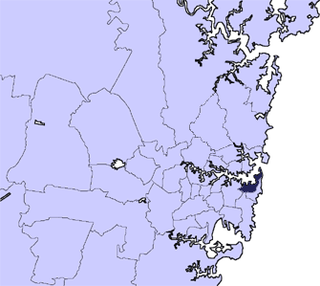
Woollahra Municipal Council is a local government area in the eastern suburbs of Sydney, in the state of New South Wales, Australia. Woollahra is bounded by Sydney Harbour in the north, Waverley Council in the east, Randwick City in the south and the City of Sydney in the west.

Vaucluse House is a heritage-listed residence, colonial farm and country estate and now tourist attraction, house museum and public park, formerly the home of statesman William Charles Wentworth and his family. It is located at 69a Wentworth Road, Vaucluse in the Municipality of Woollahra local government area of New South Wales, Australia. Completed between 1803 and 1839 in the Gothic Revival style, its design was attributed to W. C. Wentworth and built by Sir Henry Browne Hayes and W. C. Wentworth. The property is owned by the Historic Houses Trust of New South Wales, an agency of the Government of New South Wales. The site was added to the New South Wales State Heritage Register on 2 April 1999.

Newington House is a historic house in Silverwater, New South Wales, Australia and is located 20 kilometres (12 mi) west of the Sydney central business district, in the local government area of the City of Parramatta. The house and chapel are situated on the southern bank of the Parramatta River and are now enclosed by the Silverwater Correctional Centre. With Elizabeth Bay House and Camden Park, it is considered to be one of the three great houses of the County of Cumberland.
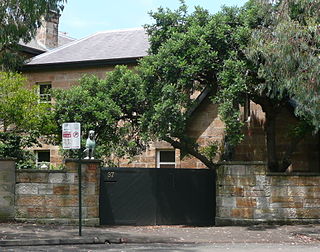
Tresco is a heritage-listed residence located at 97 Elizabeth Bay Road, Elizabeth Bay, City of Sydney, New South Wales, Australia. It was designed by Thomas Rowe and built by Rowe from 1867 to 1883. The property is privately owned. It was added to the New South Wales State Heritage Register on 2 April 1999. The property has previously functioned as a private residence, navy housing, and homestead and was originally indigenous lands. Before 2004 it was owned by the Royal Australian Navy and served as an official residence for the senior naval officers in New South Wales.
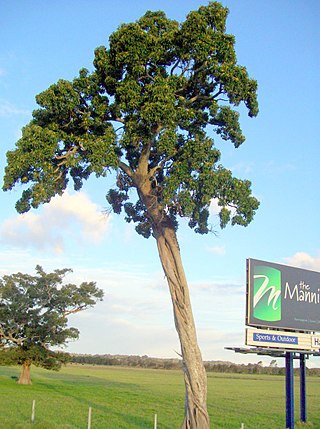
Ficus henneana is a strangler fig only occurring in Australia. Previously considered a variety of Ficus superba which occurs in China, Japan and parts of South East Asia. The cedar fig or deciduous fig grows in Australia from Milton, New South Wales to northern Queensland and the Northern Territory. The habitat is riverine, littoral or the drier forms of rainforest. The fruit is considered edible for humans, but it is not particularly palatable.
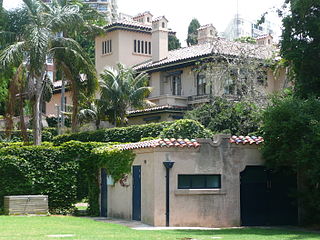
Boomerang is a heritage-listed private house and garden located at 42 Billyard Avenue in the inner eastern Sydney suburb of Elizabeth Bay, New South Wales, Australia. The house was designed by Neville Hampson and the gardens and grounds by Max Shelley, and built from 1926 to 1928.

Fernleigh Castle is a historic house in the Sydney suburb of Rose Bay, New South Wales, Australia. Completed in the Victorian architectural style, the house is listed on the Australian Register of the National Estate and the Woollahra local government heritage database.

Bronte House is a heritage-listed historic house and visitor attraction located at 470 Bronte Road, Bronte, New South Wales, a beachside suburb of Sydney, Australia. Built in the Australian Gothic Revival style, the house was designed by Georgiana & Robert Lowe and Mortimer Lewis and built from 1843 to 1845. It is also known as Bronte estate. The property is owned by Waverley Municipal Council and was added to the New South Wales State Heritage Register on 2 April 1999 and is listed on the Register of the National Estate.
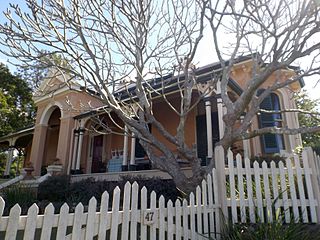
Wilston House is a heritage-listed villa at 47 Watson Street, Newmarket, City of Brisbane, Queensland, Australia. It was designed by architect James Cowlishaw and built from c. 1876 to c. 1880. It was added to the Queensland Heritage Register on 21 October 1992.
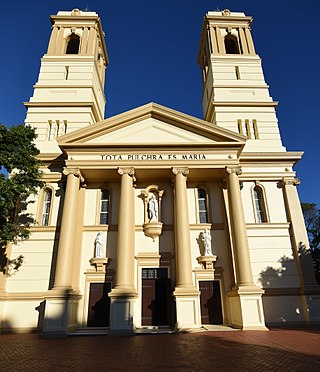
Mary Immaculate Church is a heritage-listed Roman Catholic church and friary at 45 Victoria Street, Waverley, Sydney, New South Wales, Australia. It was designed by Sheerin & Hennessy and built from 1890 to 1929 by John Ptolomy and by W. J. Bolton (1929). It is also known as Mary Immaculate Group, St Charles Borromeo Church and Parish House and Minamurra Cottage (former). The property is owned by the Association of Franciscan Friars Bros. It was added to the New South Wales State Heritage Register on 2 April 1999.

Mount Wilga House is a heritage-listed former residence and rehabilitation hospital at 2a Manor Road, Hornsby in the Hornsby Shire local government area of New South Wales, Australia. Its design is attributed to Henry Marcus Clark and was built from 1913 to 1914. It is also known as Mt Wilga. The property is privately owned. It was added to the New South Wales State Heritage Register on 2 April 1999.

Riverview House is a heritage-listed former orchard and now residence at 135 Marsden Road, West Ryde in the City of Ryde local government area of New South Wales, Australia. It was built from 1860 to 1878 by George Spurway. The property is privately owned. It was added to the New South Wales State Heritage Register on 2 April 1999.

Overthorpe is a heritage-listed former residence and grounds and now multi-unit residential complex and grounds at 337-347 New South Head Road, Double Bay, Sydney, New South Wales, Australia. It was built from 1900 to 1906. It is also known as part of the former Sir John Hay's garden. The property is privately owned. It was added to the New South Wales State Heritage Register on 2 April 1999.
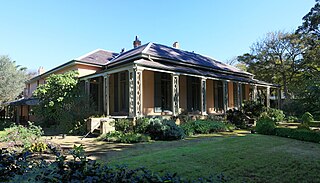
Salisbury Court is a heritage-listed former apartment building, residence, homestead, kitchen garden and garden and now residence at 1-7 Salisbury Road, Rose Bay in Sydney, Australia. The original cottage was designed by John Verge and built from 1834 to 1915. It is also known as Rose Bay Lodge; Rose Bay Cottage. The property is privately owned. It was added to the New South Wales State Heritage Register on 2 April 1999. Rose Bay Lodge contains the oldest surviving house in the Municipality of Woollahra.

Kelvin is a heritage-listed residence at 30 The Retreat, Bringelly, City of Liverpool, Sydney, New South Wales, Australia. It was built from 1820 to 1826 by Thomas Laycock. It is also known as Retreat Farm, The Retreat, Thomas Laycock's Cottage Vale and Cottage-ville. It was added to the New South Wales State Heritage Register on 2 April 1999.

The Priory is a heritage-listed residence at 213 Burwood Road, in the Sydney suburb of Burwood in the Municipality of Burwood local government area of New South Wales, Australia. It was built in 1877. The Priory and its grounds was added to the New South Wales State Heritage Register on 2 April 1999.

Gledswood is a heritage-listed former vineyard, colonial farm and homestead and now tourist complex, golf course and private residence at 900 Camden Valley Way in the south-western Sydney suburb of Gledswood Hills in the Camden Council local government area of New South Wales, Australia. It was built from 1827 to 1855 by James Chisholm. It is also known as Buckingham. The property is privately owned. It was added to the New South Wales State Heritage Register on 22 December 2006.
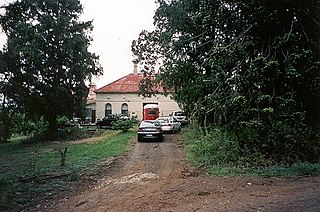
Orielton is a heritage-listed former hunting, pleasure garden, farming estate, weekender, cereal cropping, flour mill and pastoral property and now horse agistment and residence located at 181 - 183 Northern Road in the south-western Sydney suburb of Harrington Park in the Camden Council local government area of New South Wales, Australia. It was designed and built from 1815 to 1834. It is also known as Orielton Farm and Orielton Homestead. The property is privately owned. It was added to the New South Wales State Heritage Register on 22 December 2006.






















